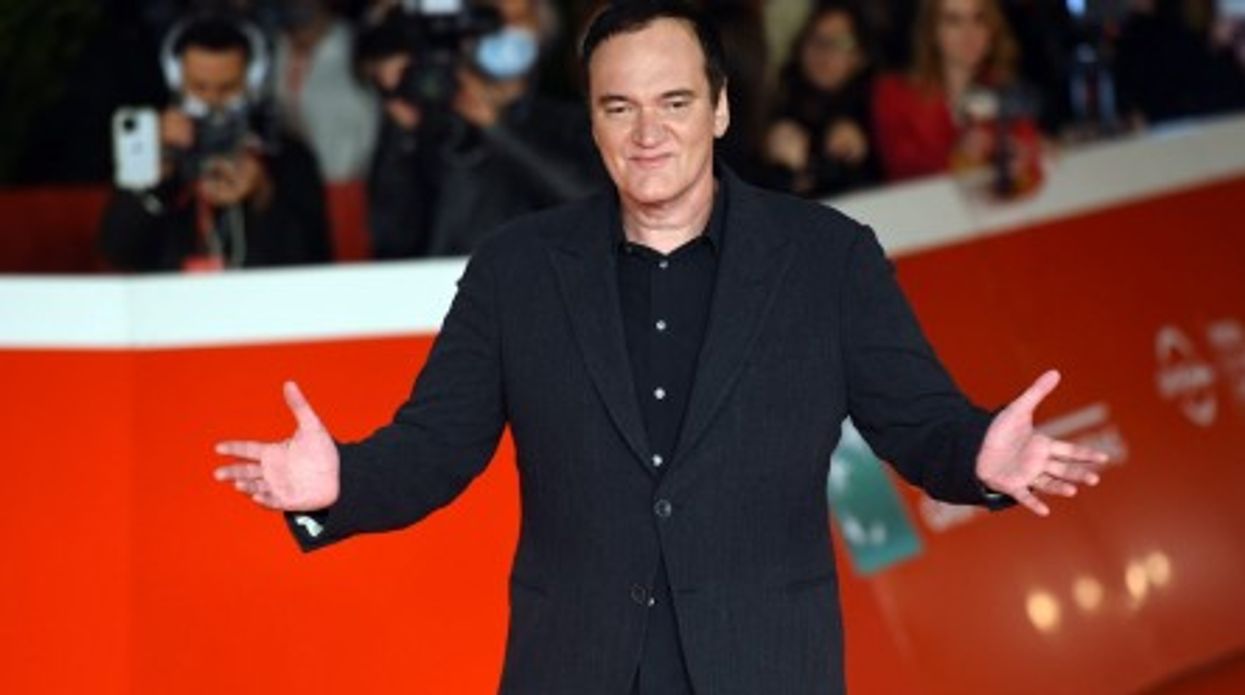Find Out What Blockbuster "Spectacle" Quentin Tarantino Is Gushing Over
We are with Tarantino on this one.

Quentin Tarantino is notorious for his love of movies. He shares this love of film with his longtime friend and sometimes collaborator Roger Avary on their podcast about classic cinema called “The Video Archives Podcast.”
Both filmmakers have one rule when it comes to talking about film. They don’t talk about new movies. The filmmakers avoid talking about new films because, as Tarantino puts it, “[T]hen I’m only forced to say good things, or else I’m 'slamming' someone, I don’t want to do that.”
Recently on the ReelBlendpodcast, Tarantino broke this rule to gush about his love for Top Gun: Maverick.
“I fucking love Top Gun: Maverick. I thought it was fantastic,” Tarantino said.

Like most cinephiles, Tarantino saw this mega-blockbuster hit in theaters. “That and [Steven] Spielberg’s West Side Story both provided a true cinematic spectacle, the kind that I’d almost thought that I wasn’t going to see anymore. It was fantastic.”
This is high praise that Tarantino is giving the cast and crew of director Joseph Kosinski’s sequel to Top Gun. Tarantino has been a long admirer of Tony Scott, who directed True Romancefrom Tarantino’s script. Scott passed away in 2012, but Kosinski, Tom Cruise, and their team wanted to pay homage to the great work of Tony Scott that moviegoers will no longer get to see.
Tarantino spoke on this, saying:
“There was just this lovely, lovely aspect because I love both Tony Scott’s cinema so much, and I love Tony so much that that’s as close as we’re ever going to get to see one more Tony Scott movie. [Kosinski] did a great job. The respect and the love of Tony was in every frame. It was almost in every decision. It was consciously right there, but in this really cool way that was really respectful. And I think it was in every decision Tom [Cruise] made on the film.”
Even in the moments that Tarantino could find criticism, he found a way to love it. When talking about the Cruise and Val Kilmer reuniting scene, Tarantino said that it “was almost too cheap, but it absolutely works. It’s a bit like Charlie Chaplin dying onstage for the last scene of Limelight—but it fucking works. You’re waiting for it and the fucking scene delivers.”
While Tarantino does love Top Gun: Maverick, he revealed on the ReelBlend podcast that the greatest movie of all time belongs to Spielberg's Jaws.
Tarantino said:
“I think Jaws is the greatest movie ever made. Maybe not the greatest film. But it's the greatest movie ever made. And then there are other movies that can get in its rarefied air. But as far as a movie, there's no making it better than Jaws. There's no ‘better’ than Jaws. It is the best movie ever made. And it shows how badly timed most movies made before Jaws were.

Maverick is truly a spectacle in every way possible that could live in the same conversation as Speilberg's Jaws as one of the greatest movies of all time. The film gave a huge confidence boost to studios that wanted to return to theatrical releases by taking in over $1 billion at the box office—the highest we’ve seen since theaters reopened after the COVID-19 pandemic.
From the practical effects to the homage to Scott’s original film to the moving story that makes us want to stand up and cheer at the end, Maverick has been a fun return to film events.
Let us know if you agree with Tarantino’s praise in the comments!
Source: ReelBlend Podcast











